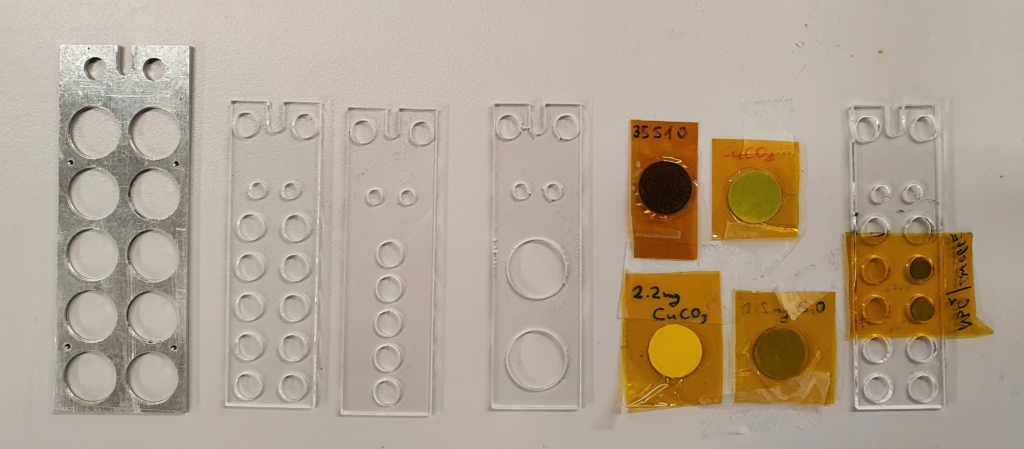Standard Measurement Service
The sample should be ready to attach to our sample holders (i.e. a solid pellet 13 or 5 mm in diameter, wrapped in Kapton tape, see below).
The sample should be reasonably simple – not too diluted, not prone to radiation damage, not too tiny, not too toxic etc. Feasibility is judged by the beamline staff.
Sample conditions and the measurement program should be simple (i.e. ambient conditions, or cryostat). The user will elaborate this in a dialogue with the beamline. We expect a measurement program not longer than 2 shifts (8 hours).
Examples of samples for the SMS:
– a few relevant samples/references related to past proposal projects;
– a set of similar samples with scope too small for a normal proposal. It could be to detect oxidation states of an element, e.g. before and after use or for various preparation routes.
Sample Feasibility
This is option offers a sample check for feasibility with regards to concentration and signal quality. The samples for these tests should preferably be solid/dry and measured at ambient conditions (cryostat).
Feasibility of experiments in in-situ cells and special holders can also be investigated (e.g. transmission measurements through an in-situ reactor). However, only if simple enough to be doable within the maximum 2 shifts.
We expect, if successful, a submitted proposal to Balder in the next call period.
Examples of feasibility check:
– low concentration samples to check absorption contrast or fluorescence count rate;
– a transmission check of a sample or a cell, which sometimes is very difficult to calculate because of a complex/unknown composition.
The FA proposal does not grant access to MAX IV, but for the training purpose of our future users or to increase the experience of PhD/master students, we may allow physical presence at the beamline, to be discussed in advance.

Example of sample holders for 13 and 5 mm diameter pellets wrapped in Kapton to be used for the Standard Measurement Service.
Follow this link to read more about all MAX IV Access modes.